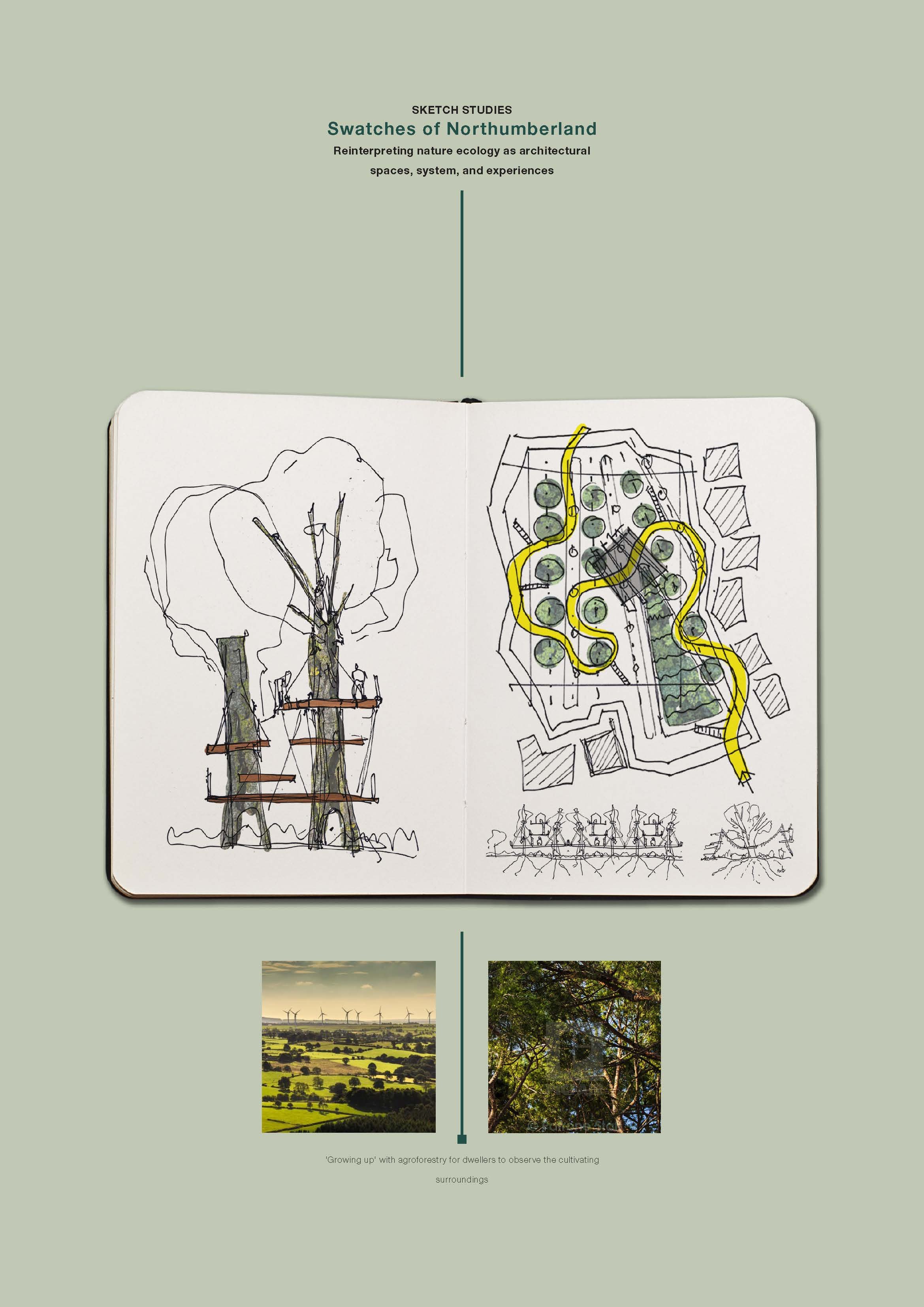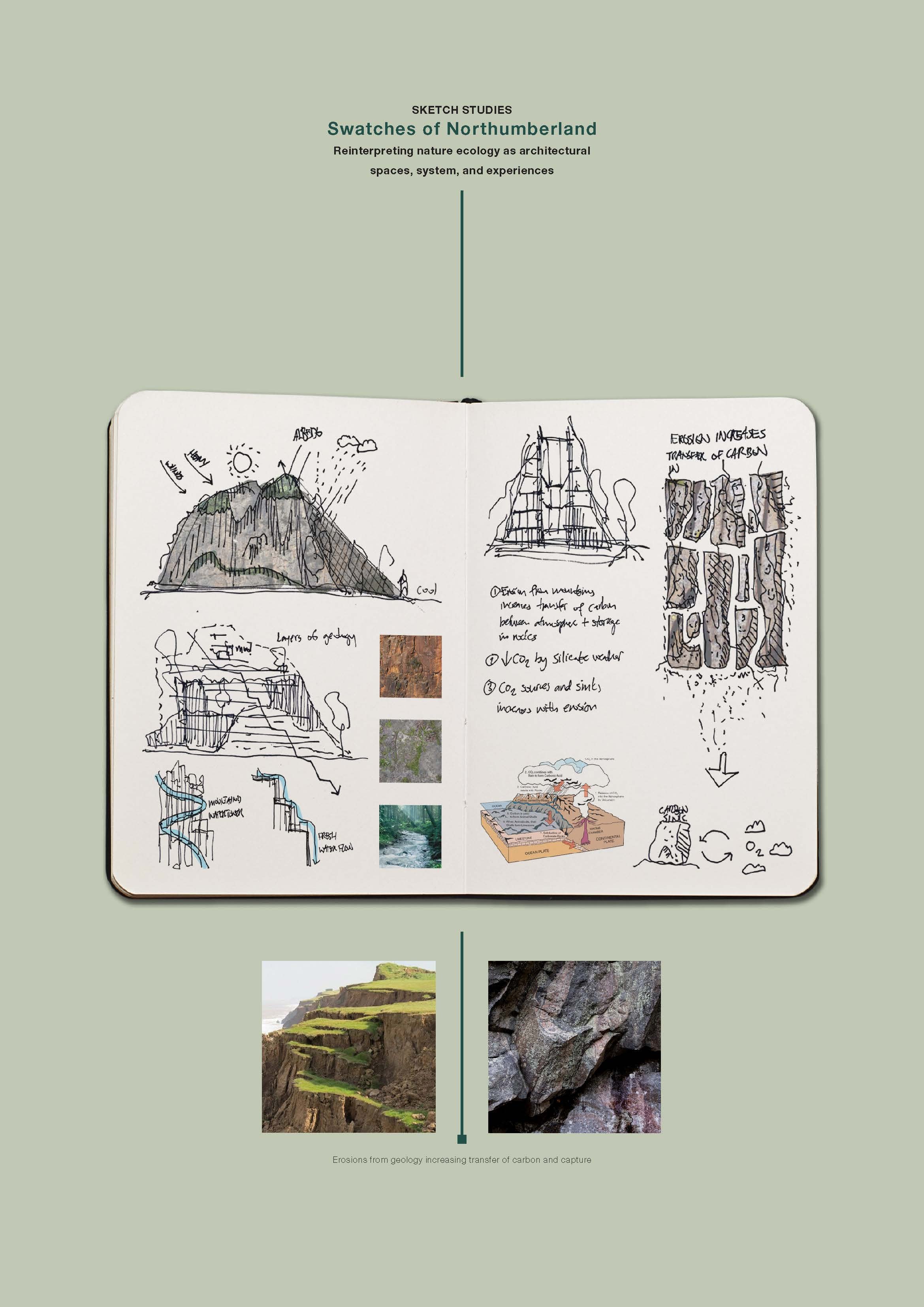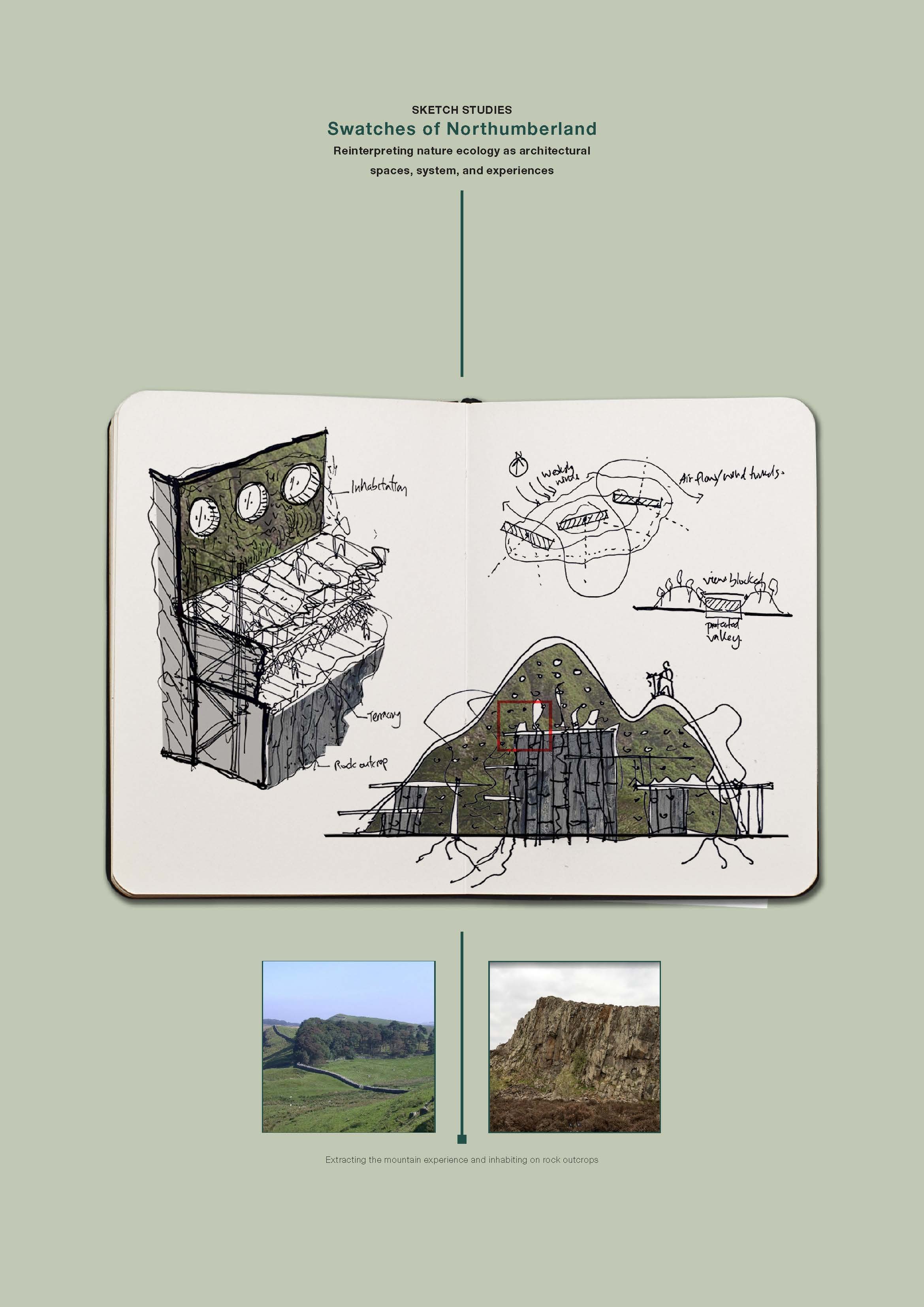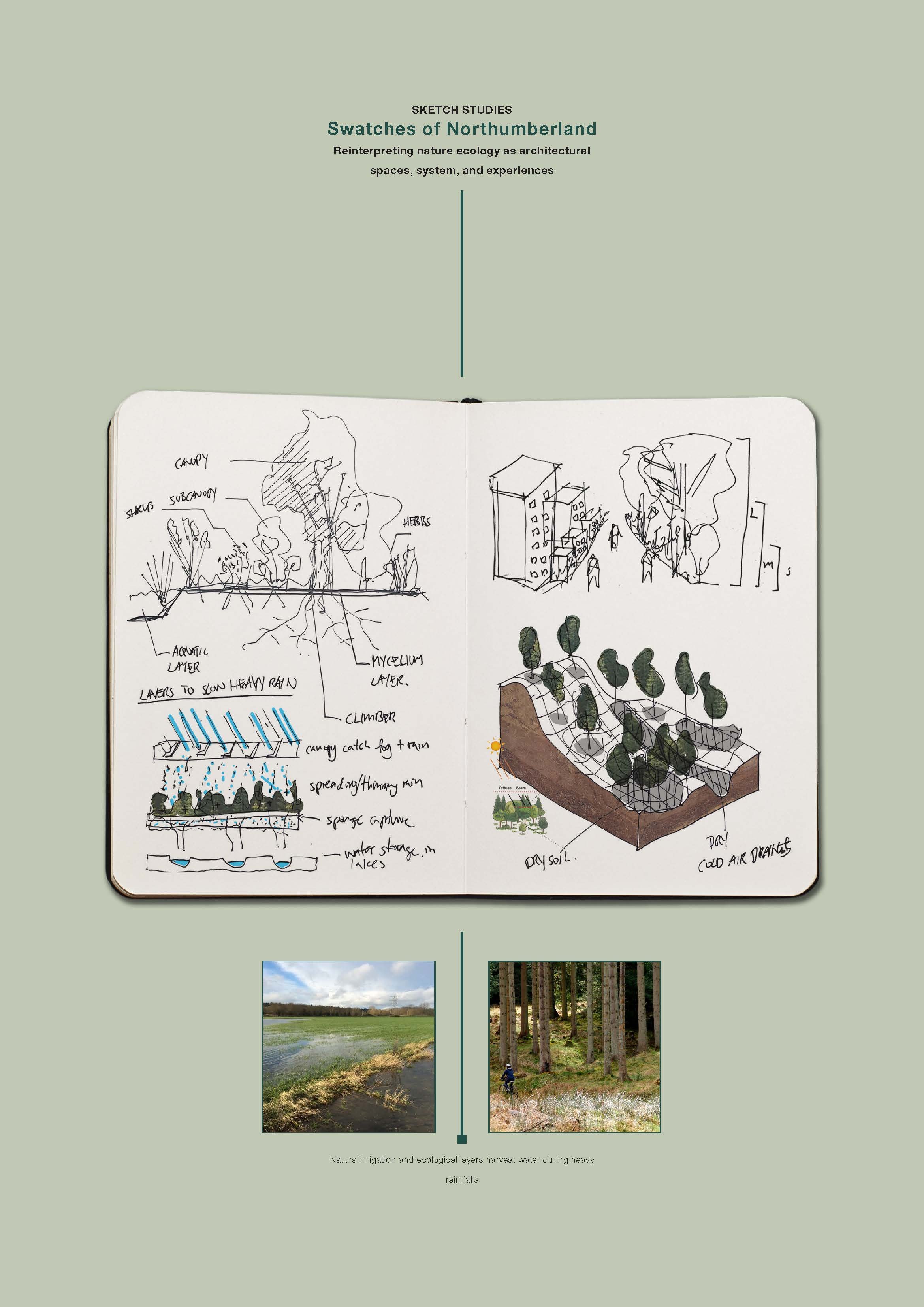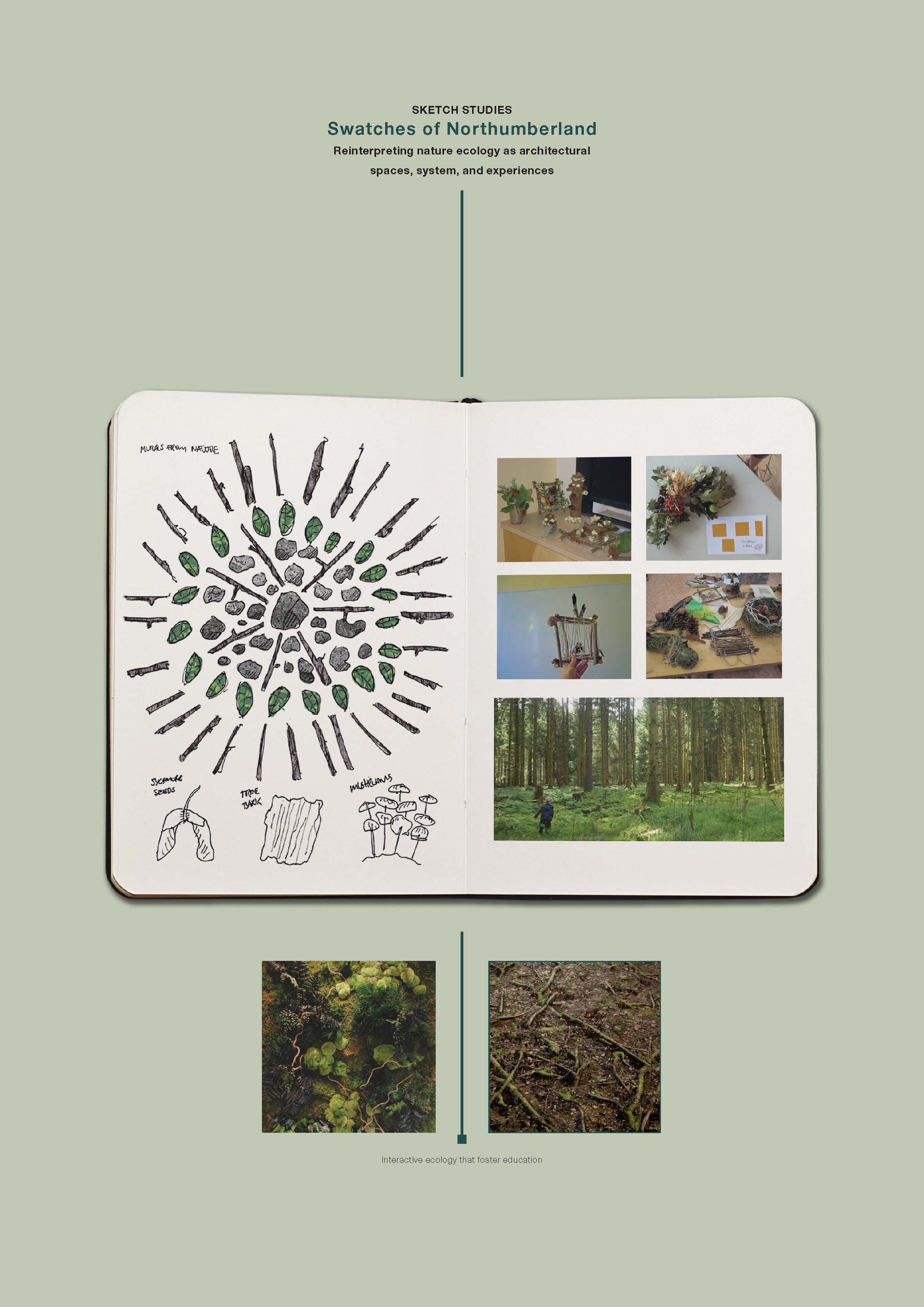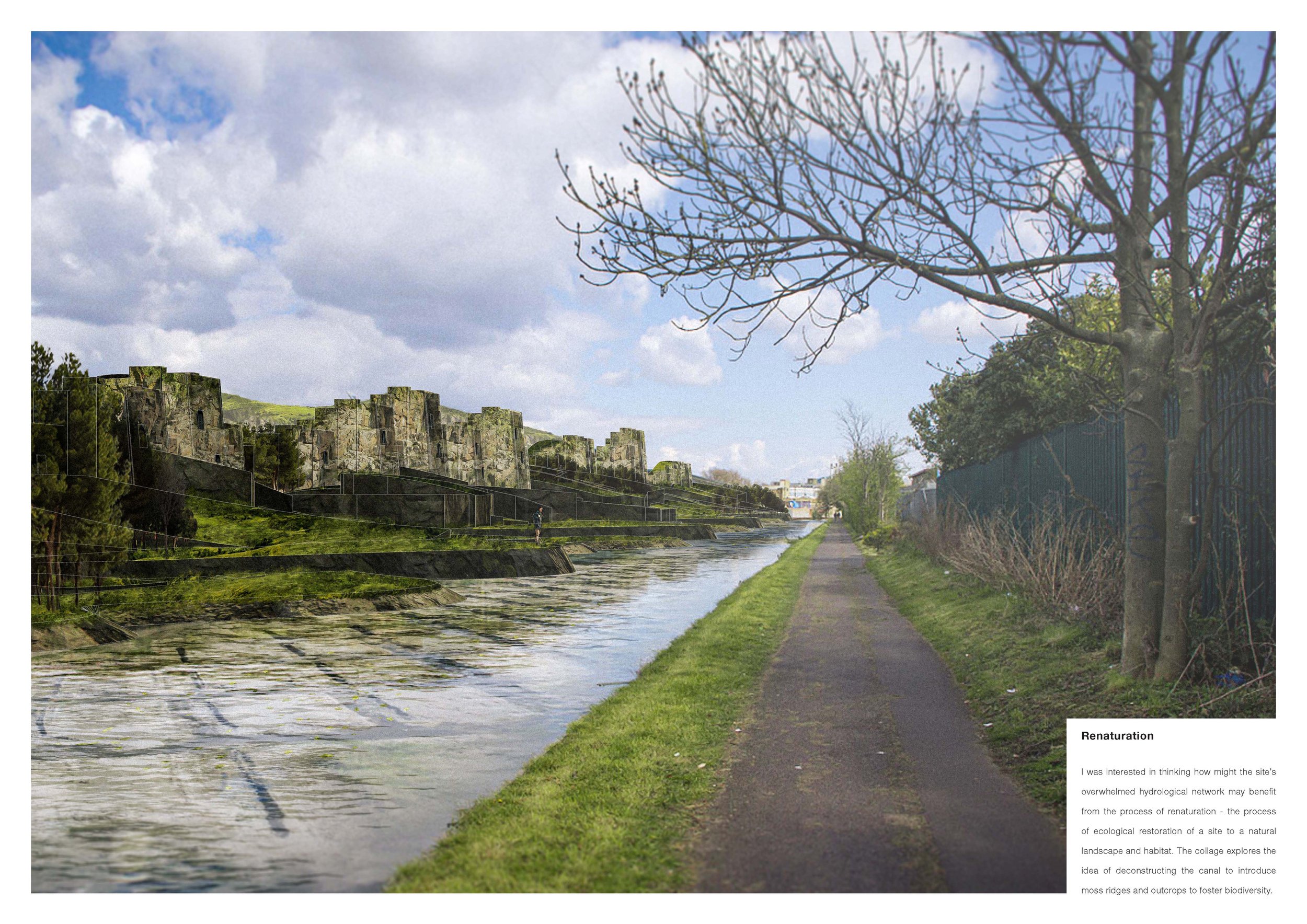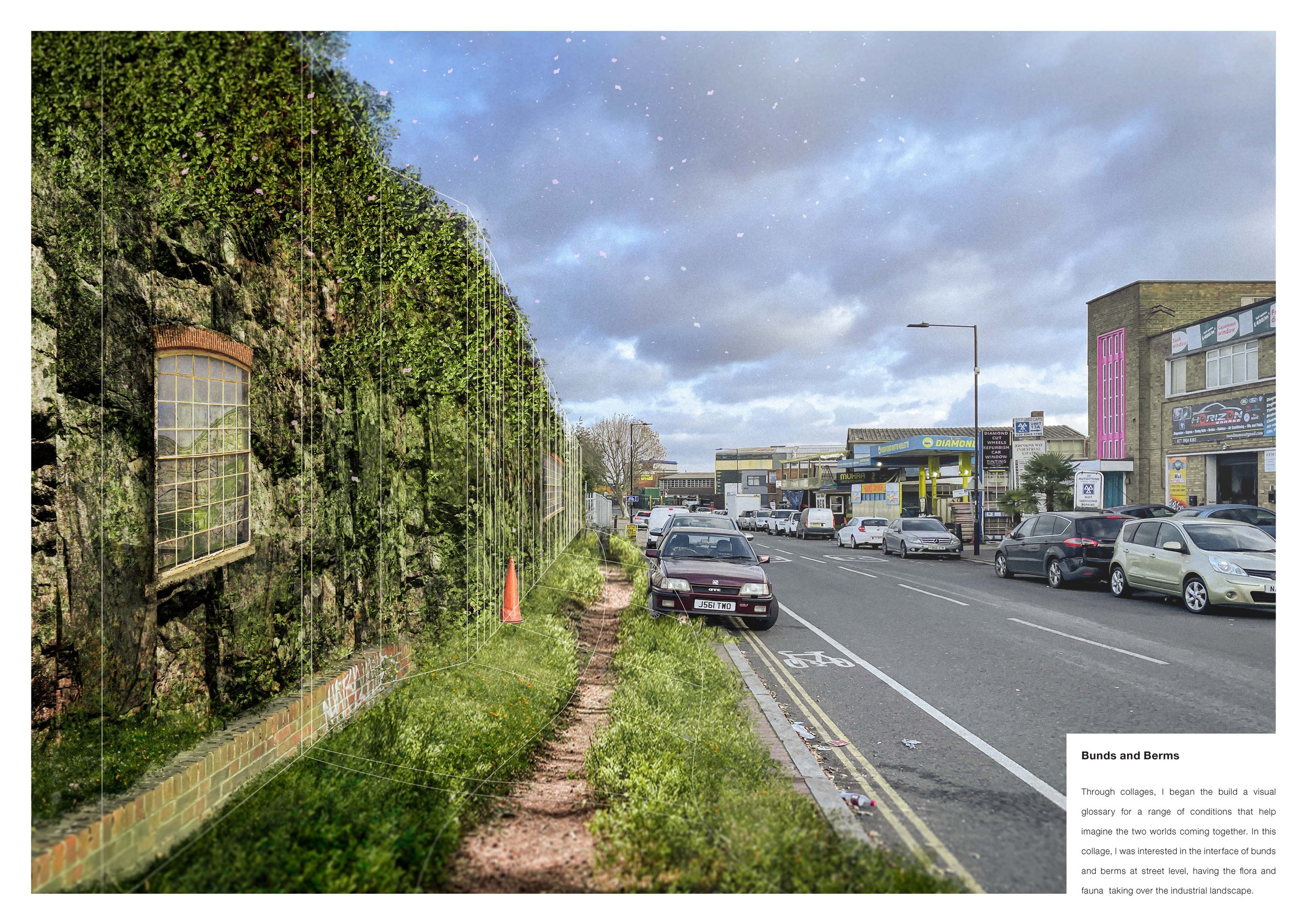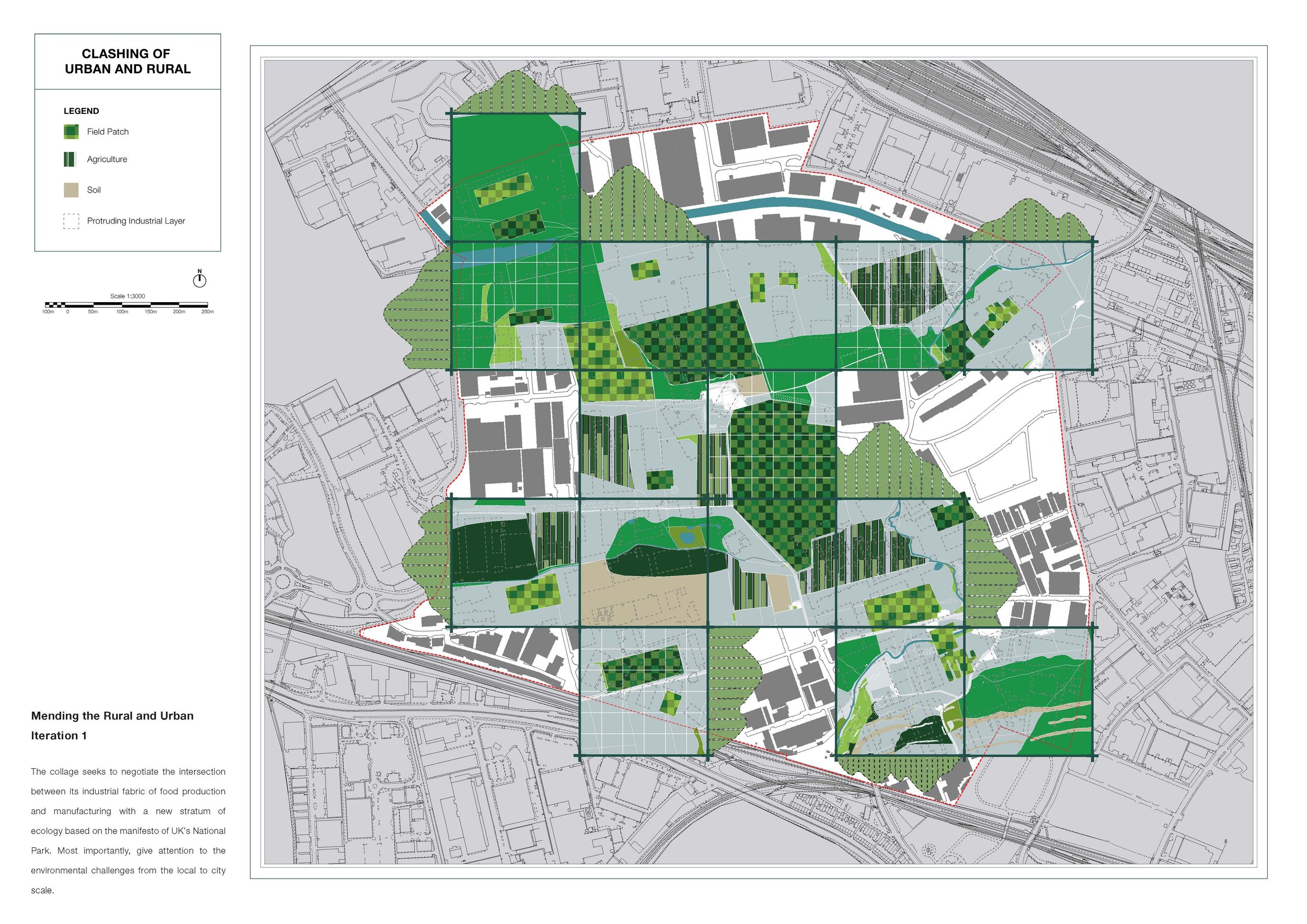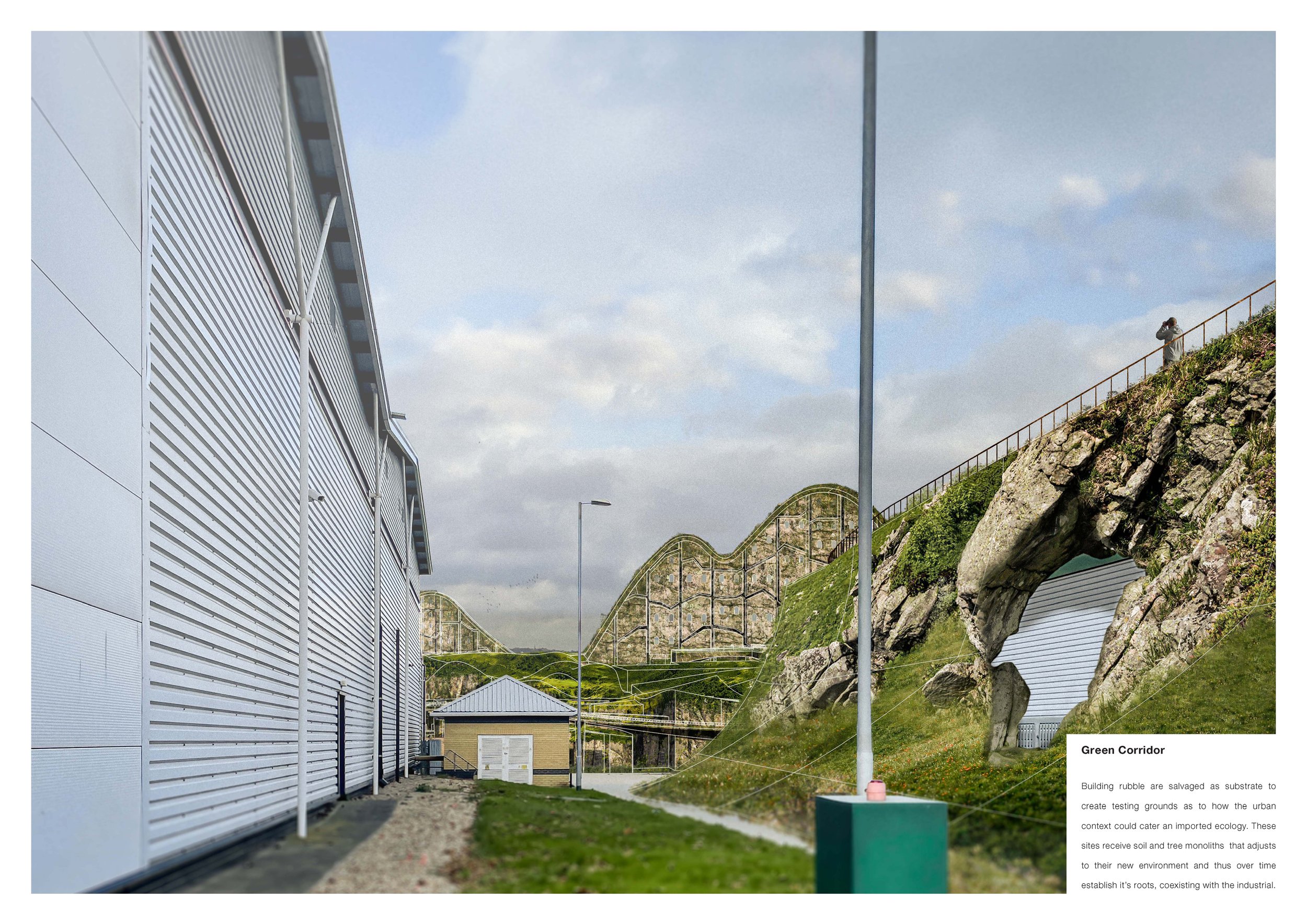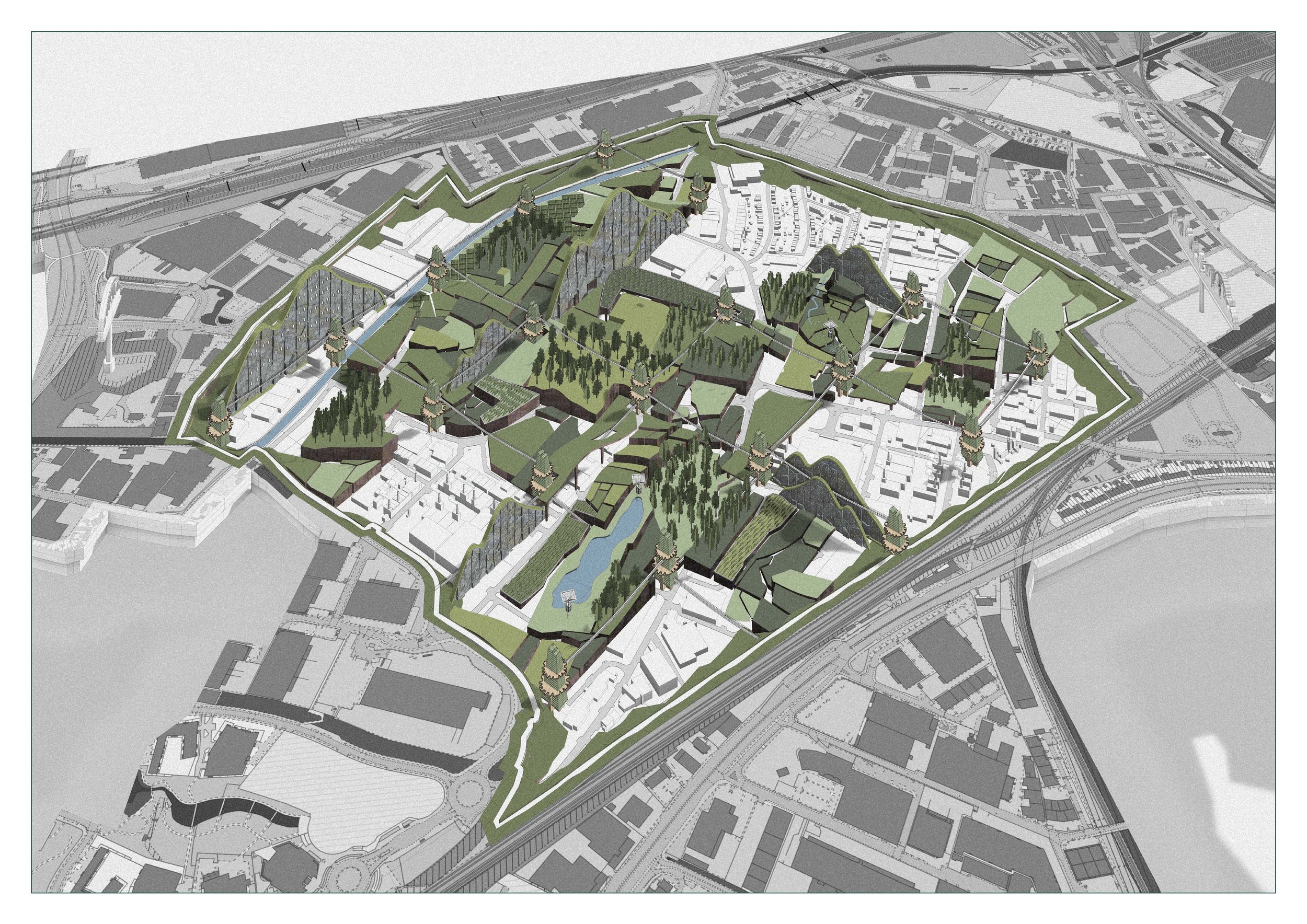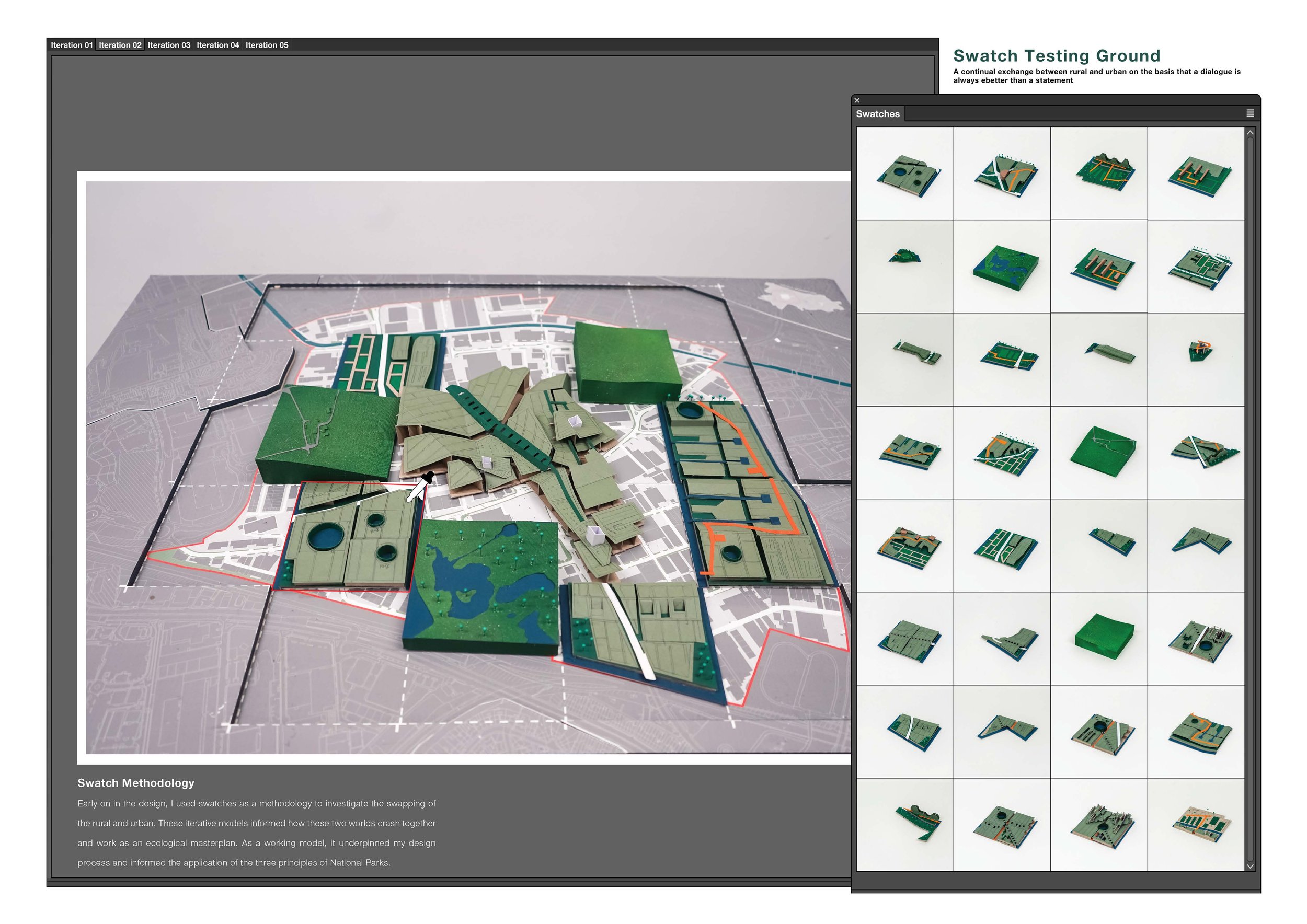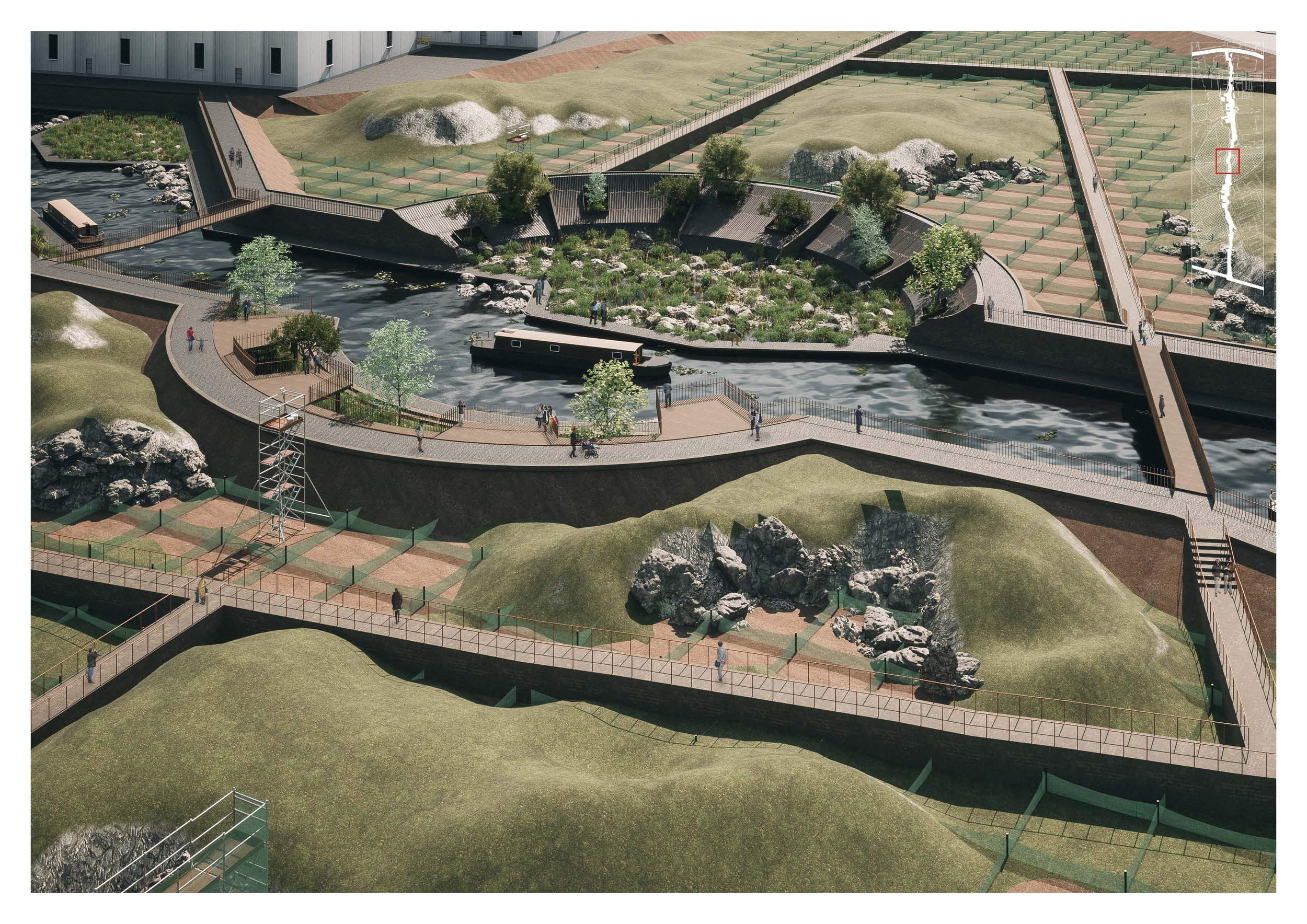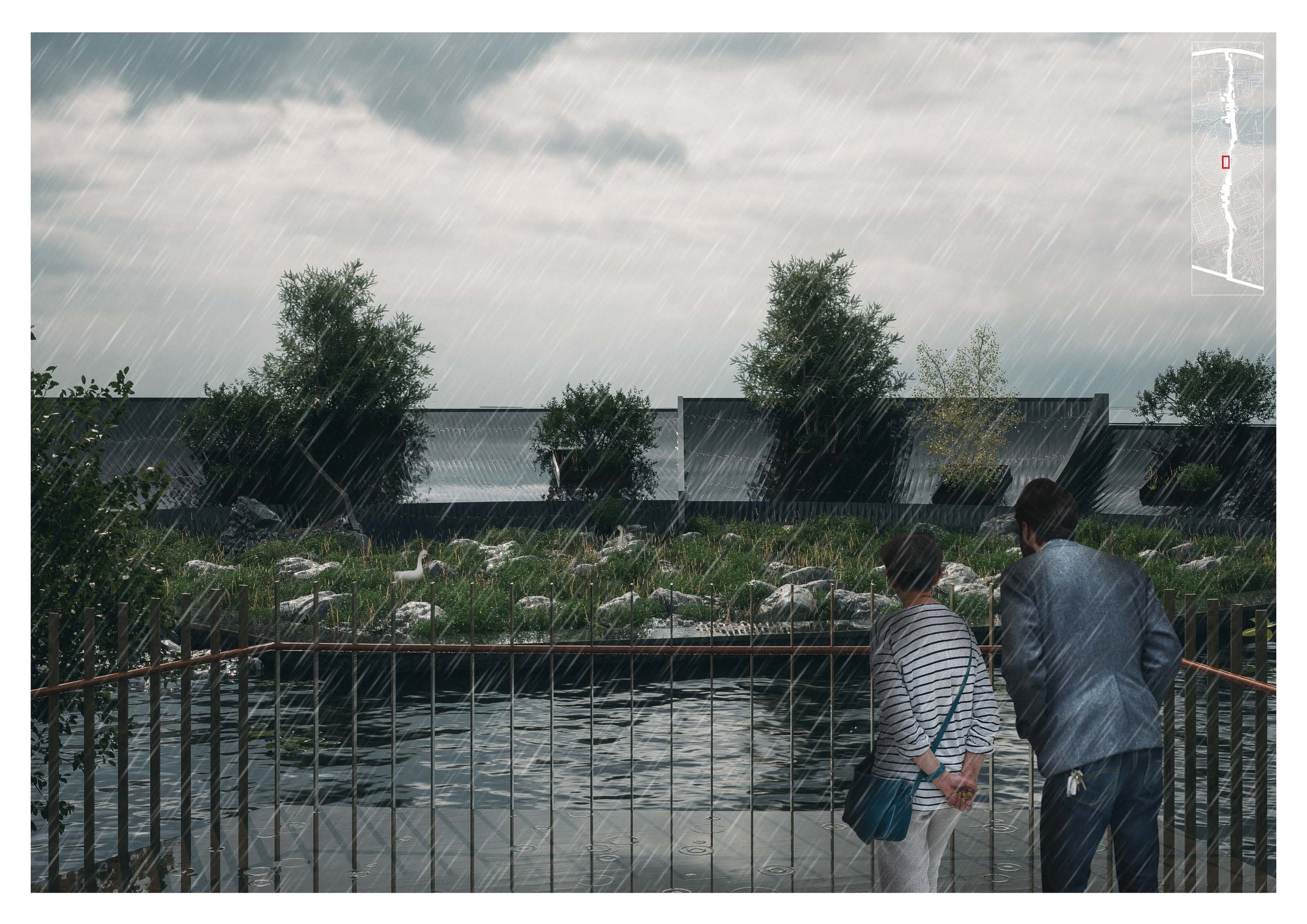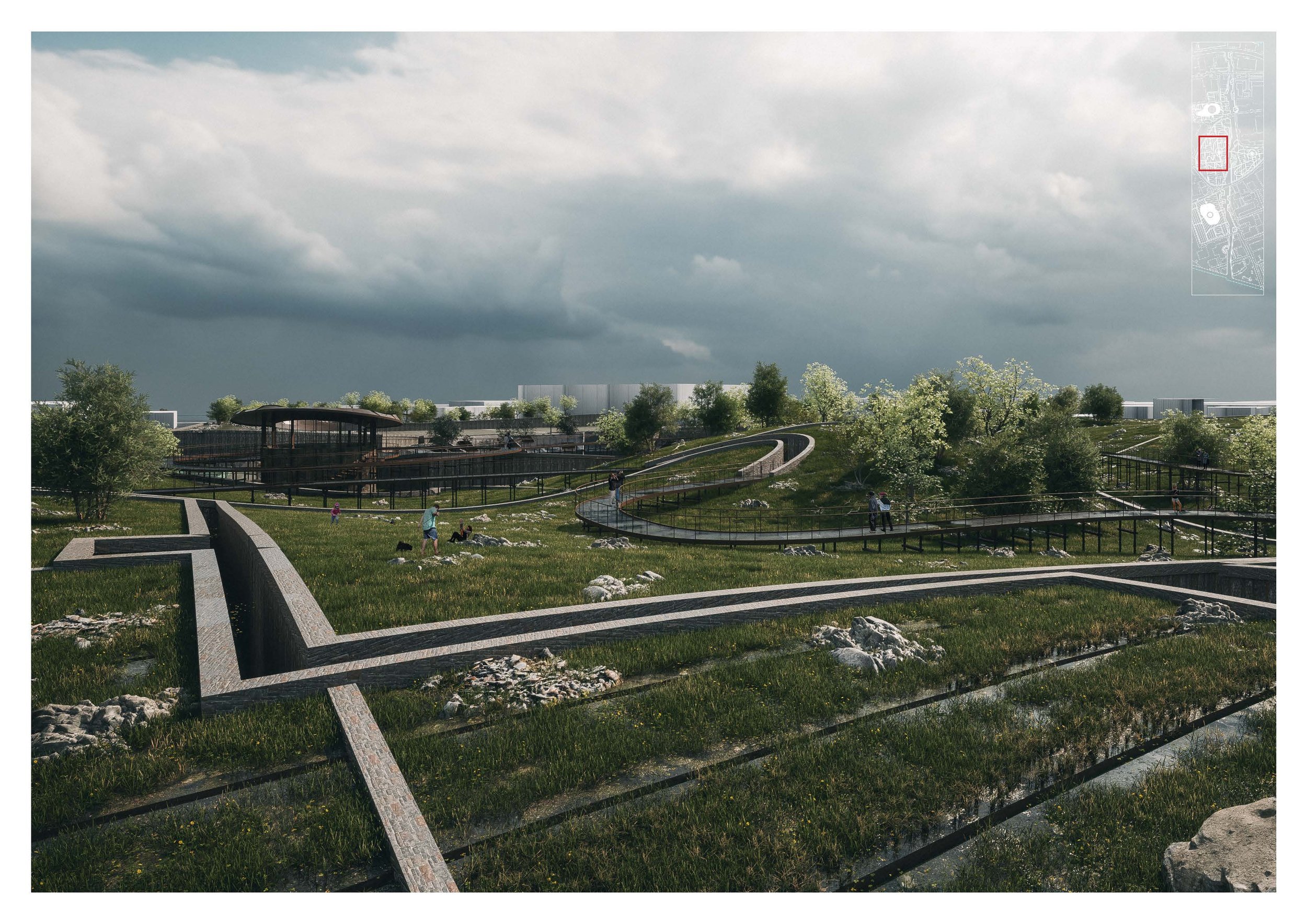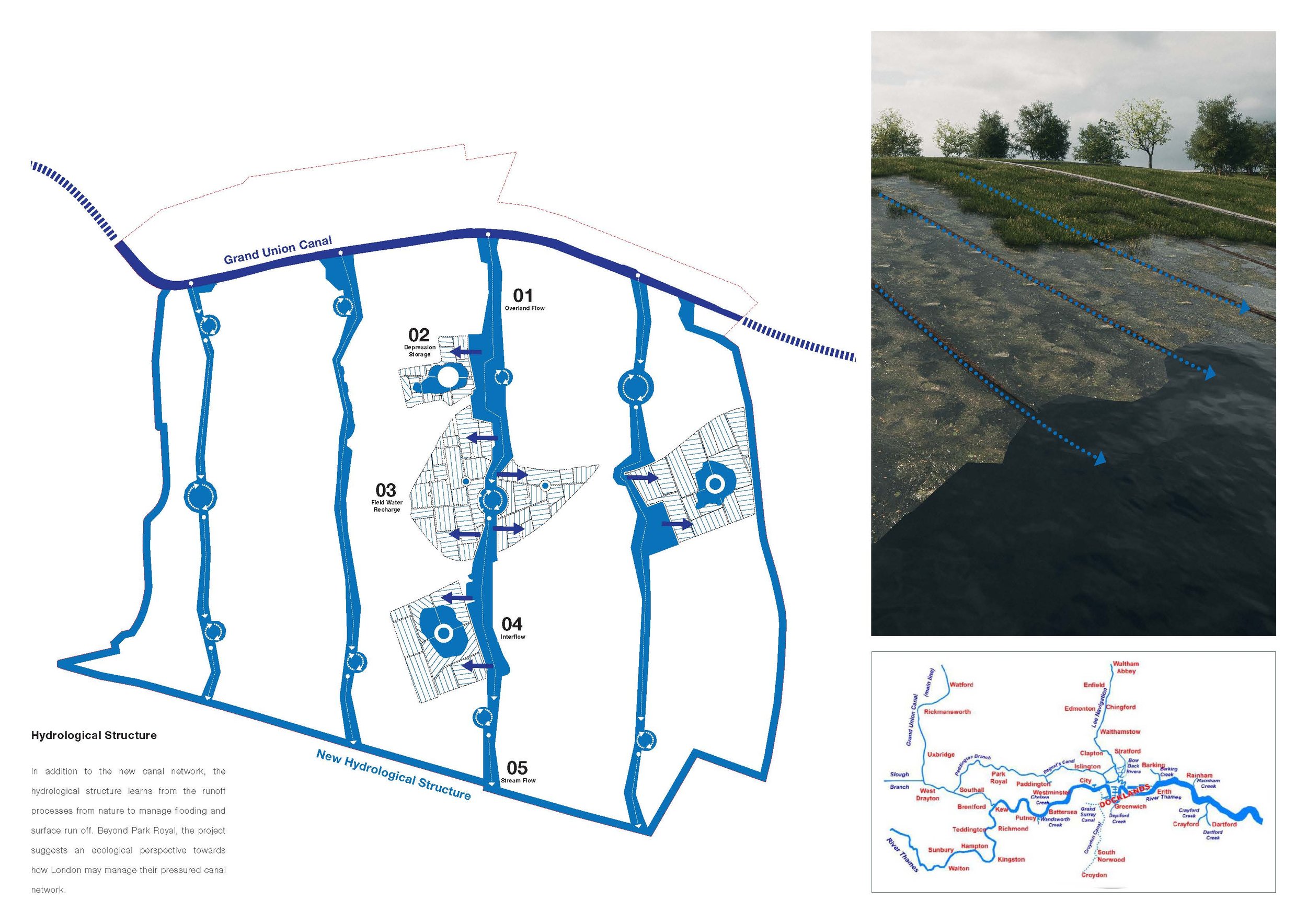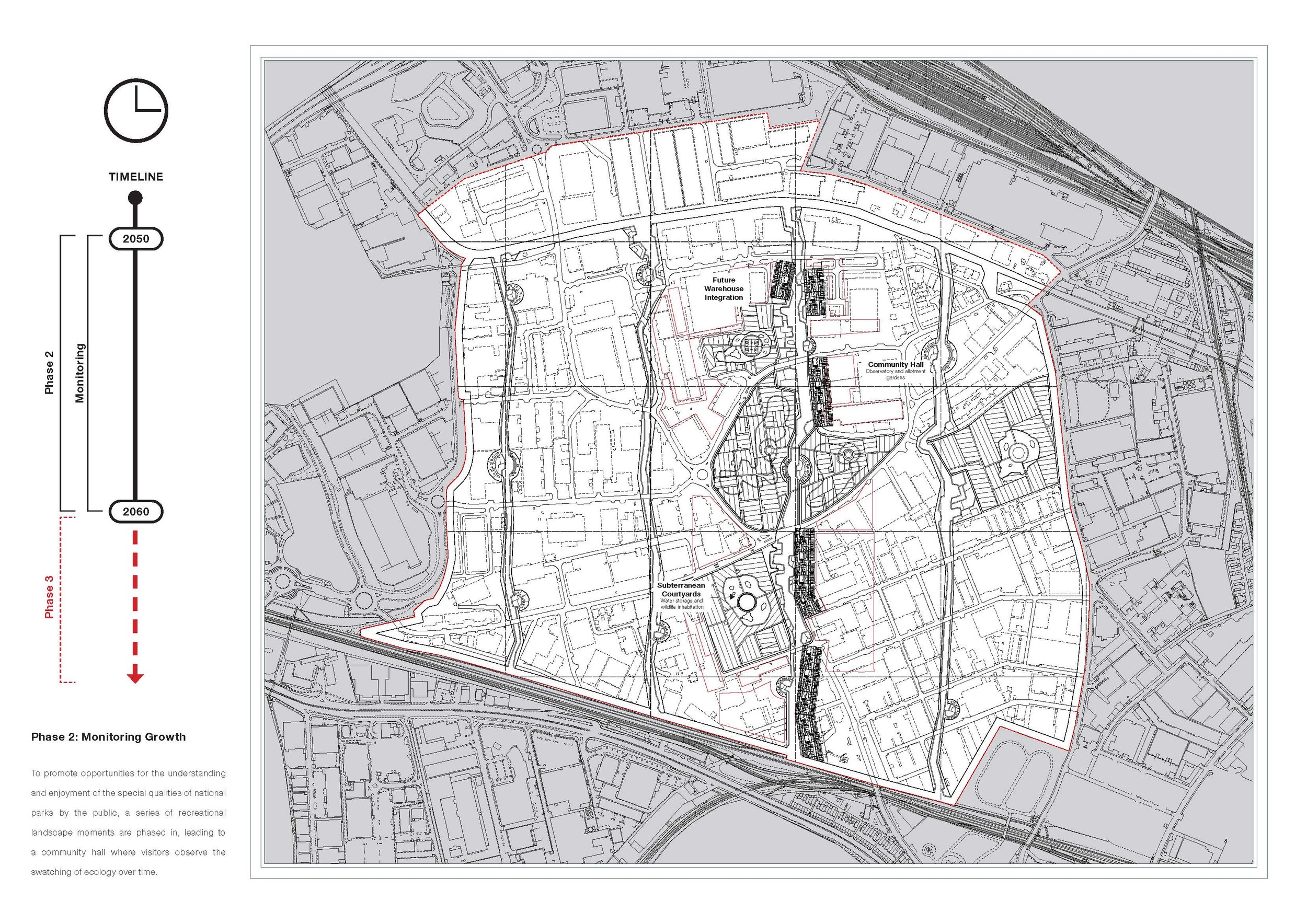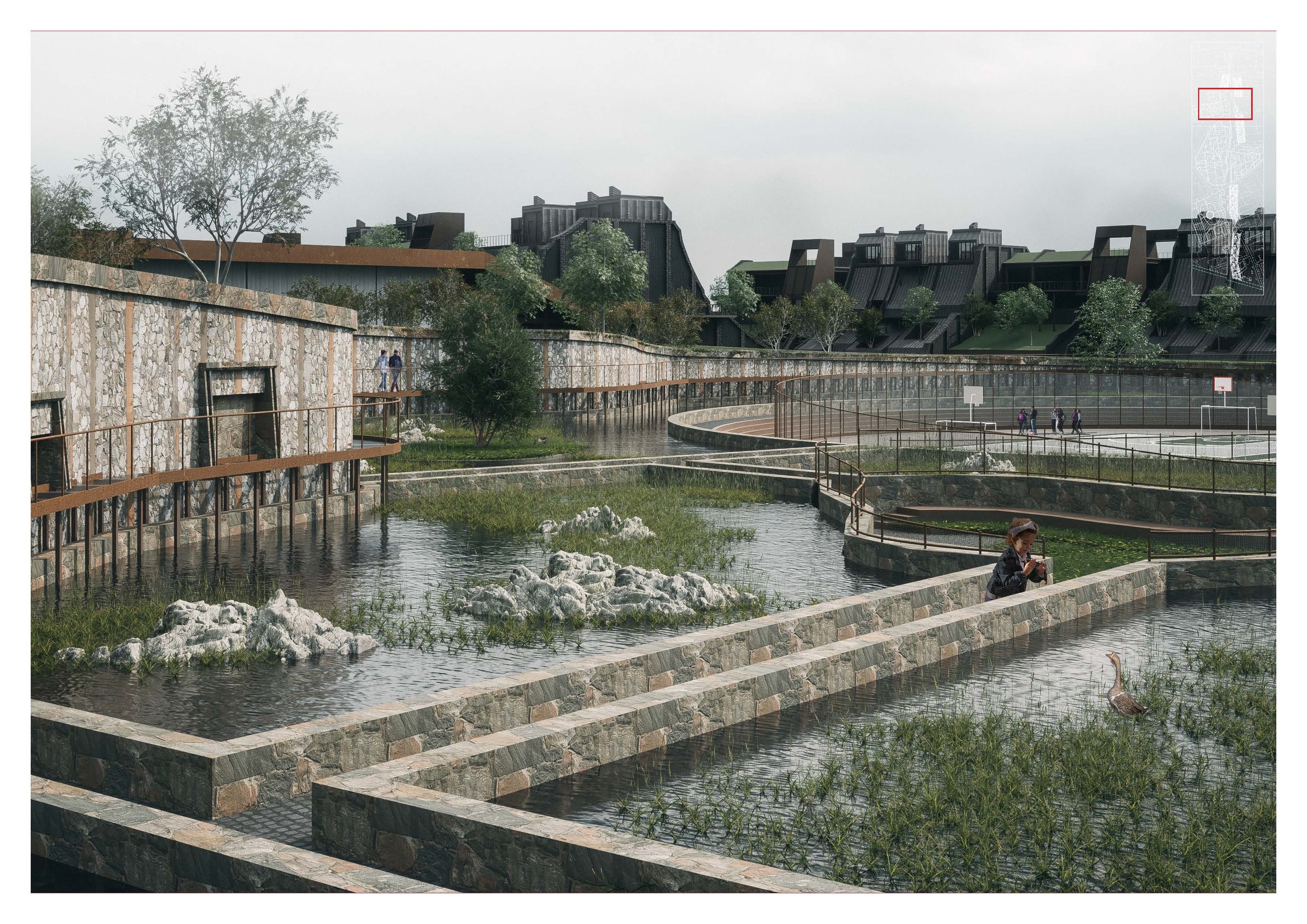Justin Lau Y5
Simulating National Park In the age of ecological emergency, is it time for our capital to become Britain’s newest national park to safeguard our agriculture, water, energy and people? 47% of London is green space and a vital asset to building a climate-resilient country. If the Garden City movement was a response to the toxic pollution caused by the Industrial Revolution, the project reverses the tradition of National Parks in rural settings and applies swatches of ecology, beyond objects or material, as forms of architectural constructs onto London’s industrial landscapes. Situated in Park Royal, one of London’s most deprived industrial neighbourhoods, the design negotiates the intersection between its industrial fabric of food production and manufacturing with a new stratum of ecology, in efforts to: 1) conserve and enhance the natural beauty, wildlife and cultural heritage, 2) promote public opportunities for the understanding and enjoyment of the special qualities of national parks, 3) foster economic and social well-being of local communities. Thus, the site is transformed into an ecological catalyst for a national-based approach to climate change across London.


